Products
Product
Chemical reaction monitor
The MB-Rx in-situ chemical reaction monitor from ABB Analytical Measurements is designed for use in laboratories and pilot plants. According to the company, the monitor is a plug-and-play system that provides real-time information about chemical or biochemical reaction kinetics and parameters. Data reportedly are collected with an insertion probe and can be analyzed via a software interface. ABB Analytical Measurements, Quebec, Canada;
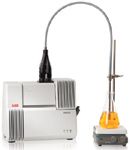
Spark atomic emission spectrometer
The OBLF GS 1000-II spark atomic emission spectrometer from PANalytical includes a spark stand design that incorpporates two counter electrodes. The design reportedly reduces total analysis time versus single-electrode spectrometers. According to the company, the instrument is capable of performing a two-measurement analysis of ferrous samples in 25 s. Samples requiring only standard carbon analysis and no nitrogen reportedly have an analysis time of 15 s. PANalytical, Westborough, MA;
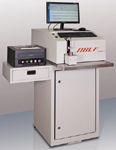
ICP-MS system
The Agilent 8800 triple-quadrupole ICP-MS system is designed to provide improved performance compared with single-quadrupole ICP-MS and to provide MS-MS operation for interference removal in reaction mode. According to the company, the system can be used to analyze elements in life-science, soil, rock, and plant materials. The system reportedly also can be set up to operate like a single-quadrupole ICP-MS system. Agilent Technologies, Santa Clara, CA;
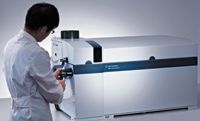
Benchtop XRD systems
Rigaku's benchtop X-ray diffraction analyzers are intended for qualitative and quantitative analysis of polycrystalline materials. The Miniflex 600 analyzer operates at 600 W (X-ray tube), and the Miniflex 300 analyzer operates at 300 W and does not require an external heat exchanger. The analyzers reportedly are available with sample changers and are supplied with powder diffraction analysis software. Rigaku Corporation, The Woodlands, TX;
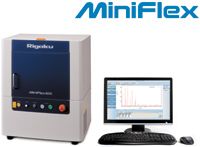
Digital scientific camera
The xSCELL digital scientific camera from Photonis USA is designed for high-speed imaging at low light levels and with low dark noise requirements. Applications include fluorescence imaging, spinning disk confocal microscopy, high-throughput screening, and gene sequencing. According to the company, the camera features 1000 frames/s at a resolution of 1024 × 1024, readout noise of less than 2 e- rms, and quantum efficiency of 65%. Photonis USA, Sturbridge, MA;
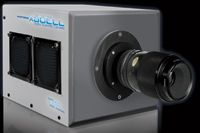
ICP accessory
Glass Expansion's Niagara Plus ICP accessory includes a six-port valve designed for simplified operation. An optional seventh port reportedly is available for automatic dilution or addition of internal standard. According to the company, software and port drivers are preloaded.Glass Expansion Inc., Pocasset, MA;
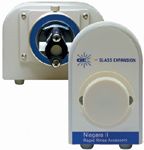
Imaging system
The iStar 312T imaging system from Andor is designed to provide acquisition rates greater than 15 frames/s and can be used for combustion and plasma studies. According to the company, the system also features a -40 °C thermoelectric cooling interface, low-noise electronics, and high-sensitivity photocathodes. The system's integrated digital delay generator reportedly enables low insertion delay and timing accuracy down to a few tens of picoseconds. Andor Technology, Belfast, UK;
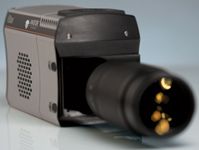
USB-to-Ethernet converter
The AvaGigE USB-to-Ethernet converter from Avantes is designed to enable the company's Avaspec miniature spectrometers to be controlled through an IP network. According to the company, the hardware device supports the connection of as many as 16 spectrometers (via USB hub) and a web-based configuration utility. Avantes, Broomfield, CO;

Raman spectrometer
The RamSpec-HR 1064-nm Raman spectrometer from BaySpec is designed as a research-grade instrument for the wavelength range up to 1700 nm. The benchtop spectrometer reportedly is suited for applications such as process control, routine analytical analysis, reaction monitoring, material identification, and mixture analysis. According to the company, the instrument includes a light-tight sampling chamber, volume phase gratings customized for each specific wavelength region, and deep-cooled InGaAs array detectors. BaySpec Inc., San Jose, CA;

Diode laser modules
The MLD series high-performance laser diode modules from Cobolt AB cover a spectral range between 405 and 660 nm. According to the company, the lasers can be used for fluorescence applications such as confocal microscopy and flow cytometry, and they feature direct intensity modulation capability for applications such as optogenetics, microlithography, and metrology. All control electronics reportedly are integrated in an industry-standard-size laser head. Cobolt AB, Solna, Sweden;

X-ray sources
Moxtek's OptiMAG X-ray sources are designed for applications such as X-ray spectrometry and real-time imaging, in which collimated, high-flux, and stable X-ray output is required. The sources' focal spot reportedly is less than 800 µm and is centered on the X-ray exit window. According to the company, the sources' operate in the 4–50 kV, 0–200 µµA range with a maximum output power of 4 W. The sources are intended for use in both handheld and benchtop instruments. Moxtek, Inc., Orem, UT;
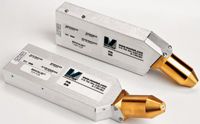
Dual laser source Raman module
PD-LD's LS-2 LabSource benchtop Raman module has two laser sources. According to the company, the laser sources are VBG-stabilized, and are available in standard and custom wavelengths. When the two laser sources' wavelengths are closely spaced together, the module reportedly is capable of performing surface enhanced Raman differential spectroscopy. PD-LD, Inc., Pennington, NJ;
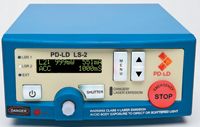
FT-NIR spectrometer
The Tango FT-NIR spectrometer from Bruker Optics is designed as a stand-alone benchtop system with touch-screen operation. The spectrometer is intended for use in applications such as food, feed, chemical, and pharmaceutical analyses. The system is available in two versions, one for measuring solids in reflection and one for measuring liquids in transmission. According to the company, the spectrometer can be used in laboratory and dusty environments. Bruker Optics Inc., Billerica, MA;

Miniature voltage converters
The A Series DC-to-high-voltage-DC converters from EMCO High Voltage are designed to provide controllable output voltages of 100 V to 6000 V. The output power is 1 W standard, with 1.5 W available as an option. The converters reportedly occupy less than 0.1 in.3 of volume and have a profile of 0.250 in. EMCO High Voltage Corporation, Sutter Creek, CA;
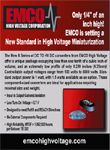
UV–vis spectrophotometers
UV–vis spectrophotometers from Shimadzu Scientific Instruments are designed for routine analysis and research applications. The double-monochromator UV-2700 system reportedly achieves stray light levels of 0.00005% T at 220 nm, a photometric performance range of 8 Abs, and a transmittance value of 0.000001%, which enables the measurement of low-transmittance samples. According to the company, the single-monochromator UV-2600 system features a measurement wavelength range to 1400 nm, which allows measurements in the near-infrared region and analysis of photovoltaics and other materials. Shimadzu Scientific Instruments Inc., Columbia, MD;
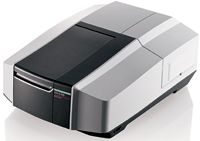
Materials characterization database
Release 2011 of the Powder Diffraction File from ICDD contains ~747,000 unique material data sets. According to the company, each data set contains diffraction, crystallographic, and bibliographic data, as well as experimental, instrument, and sampling conditions, and select physical properties in a common standardized format. International Centre for Diffraction Data, Newtown Square, PA;
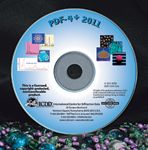
Infrared filters
Infrared filters from CVI Melles Griot are manufactured using a sputter coating process and are designed for durability and environmental resistance. According to the company, the filters are optimized for peak transmission and blocking. The filters can be used for applications such as gas analyzers, nondispersive, or Fourier-transform instruments, spectrometers, and biomedical devices. CVI Melles Griot, Albuquerque, NM;

ATR accessory
The Diamond ConcentratIR horizontal multiple internal reflection accessory from Harrick is designed for analyzing minute liquid and paste samples in quality control environments. According to the company, the compact attenuated total reflection (ATR) microsampler incorporates a diamond internal reflection element, and its infrared beam interacts within a 4-mm diameter area. The instrument reportedly has a feature that allows rapid sample exchange without interrupting the purge of the spectrometer. Harrick Scientific Products, Inc., Pleasantville, NY;
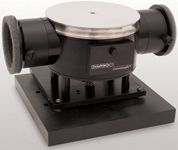
Inorganic certified reference materials
Inorganic certified reference materials from SPEX CertiPrep are designed for use with US EPA and ASTM methods. The products can be used for compliance monitoring of drinking water samples and for the analysis of ground and surface water. Common methods include US EPA SW-846, Method 1310, US EPA 200.7, and US EPA 200.8. According to the company, each standard comes with a comprehensive, detailed certificate of analysis, and MSDS. SPEX CertiPrep, Metuchen, NJ;
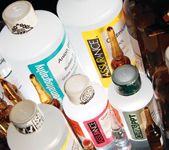
Raman software
LabSpec 6 Raman software from Horiba Scientific is designed to guide researchers through system setup, Raman spectrum data and map acquisition, measurement and data processing, and report generation. The software reportedly offers comprehensive data acquisition, processing, and display functionalities for the company's Raman, cathodoluminescence, and photoluminescence spectrometers. According to the company, the software also includes an integrated multivariate analysis module for characterization of complex datasets and on-the-fly data processing. Horiba Scientific, Edison, NJ;

Diffraction gratings
Zeiss mechanically ruled or holographically recorded diffraction gratings from Hellma are designed using holographic exposure systems and ultrahigh-precision ruling engines. According to the company, the gratings are used with monochromators, spectographs, spectrophotometers, dye lasers, and other laser types. Hellma, Plainview, NY;
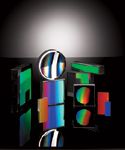
Silicon drift detectors
Amptek's Super silicon drift detectors are designed for XRF applications with OEM handheld instruments and benchtop analyzers. According to the company, the detectors have 125-eV FWHM resolution, an 11.2-µs peaking time, and a P/B of 8200 with an area of 25 mm2 and a silicon thickness of 500 µm. The detectors reportedly are contained inside the same TO-8 package and do not require liquid nitrogen. Amptek Inc., Bedford, MA;
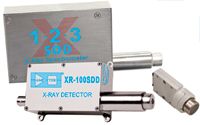
AA spectrometers
The PinAAcle atomic absorption spectrometers from PerkinElmer are available with a variety of configurations and capabilities, including flame only, furnace only, or stacked designs featuring both; flame, furnace, flow injection, FIAS-furnace, and mercury/hydride capabilities on a single instrument; and with deuterium or longitudinal Zeeman background correction. The spectrometers include the company's TubeView color furnace camera and WinLab32 software. PerkinElmer, Waltham, MA;,
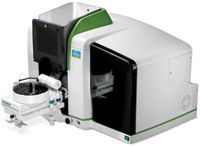
Topographic Raman imaging
WITec's True Surface Microscopy imaging mode is designed to allow large-area topographic coordinates from the profilometer measurement to be precisely correlated with the large-area confocal Raman imaging data. This option reportedly enables samples that would normally require extensive preparation to obtain a certain surface flatness to be automatically characterized as they are. According to the company, it allows scan ranges as large as 50 mm × 100 mm with a spatial resolution of 100 nm vertically and 10 µm laterally. WITec GmbH, Ulm, Germany; www.witec.de
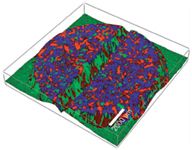
Temperature controllers
The PTC Series temperature controllers from Wavelength Electronics are designed for use in applications such as particle and droplet measurement, communications, manufacturing testing, and medical systems. The controllers reportedly operate from single power supply between 5 V and 30 V, and two models drive ±5 A or ±10 A to a Peltier thermoelectric cooler or resistive heater. The controllers mount directly to a circuit board. According to the company, the controllers interface with various temperature sensors and have an adjustable bias current. Wavelength Electronics Inc., Bozeman, MT;
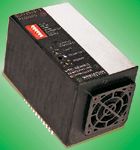
Mercury analyzers
Teledyne Leeman's Hydra II mercury analyzers are designed to provide configuration flexibility. According to the company, the analyzers can be configured to conduct the analysis of liquids by sample digestion followed by cold vapor atomic absorption or cold vapor atomic fluorescence, and the direct analysis of solid or semisolid sample matrices through thermal decomposition followed by cold vapor atomic absorption. Teledyne Leeman Labs, Hudson, NH;
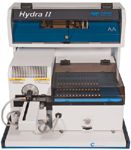
Spectrometer
StellarNet's Black-Comet-HR concave grating spectrometer is designed for high-resolution applications. According to the company, the system is available for measurements in two ranges, UV (200–600 nm) and visible (380–750 nm), and can achieve resolving resolutions of 0.4 nm. The system reportedly is USB-2 powered, shock-proof, and vibration tolerant with no moving parts StellarNet, Tampa, FL;
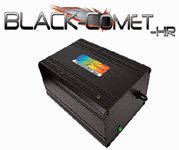
Raman analyzer
The EZRaman-N analyzer from Enwave Optronics is designed for fast carbon nanotube characterization. According to the company, the 100–3300 cm-1 spectral range covers full carbon nanotube bands of interest from the radial breathing mode to the G'-band. Enwave Optronics, Inc., Irvine, CA;
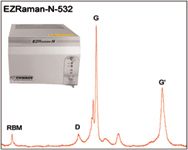
Hyperspectral imaging camera
Horiba Scientific's Verde hyperspectral imaging camera is designed to measure complete image and spectral information simultaneously. According to the company, the camera can capture the complete spectrum of every point in an image in a single measurement in 3 ms. The camera reportedly uses a 2-D dispersion element to capture all spatial and spectral information, and no averaging or repeated experiments are required. The camera has no moving parts. Possible applications are field work and industrial quality control, including plasma monitoring in semiconductor foundries, color quality control for fabrics, paints, foods, computer monitors, and televisions. Horiba Scientific, Edison, NJ;

UV–vis microvolume spectrophotometer
The NanoDrop Lite UV–vis microvolume spectrophotometer from Thermo Fisher Scientific is designed to measure nucleic acid and protein concentrations in 1.0–2.0 µL sample sizes. According to the company, the compact spectrophotometer is suited for rapid, accurate, and reproducible microvolume measurements without the need for dilutions. Applications include routine measurements related to sequencing, PCR/qPCR, protein isolation, antibody production, and HLA typing. Features include local control, and a docking printer is available that prints freezer-compatible adhesive labels. Thermo Fisher Scientific, Waltham, MA;
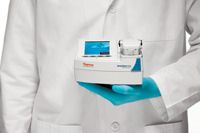
Raman microscope
Renishaw's inVia Raman microscope can be used for nondestructive testing of sperm DNA for assessing the healthiness of sperm cells. The instrument can be customized to integrate optical tweezing, which enables researchers to immobilize sperm cells with a tightly focused laser beam. The resulting Raman spectra contain information about the vibrations of molecules within the sperm cells and can be used to assess the state of its DNA. Renishaw, Hoffman Estates, IL;
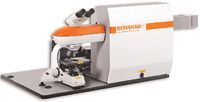
Photovoltaic measurement system
Newport Corporation's Oriel IQE-200 photovoltaic cell measurement system is designed for simultaneous measurement of the external and internal quantum efficiency of solar cells, detectors, and other photon-to-charge converting devices. The system reportedly splits the beam to allow for concurrent measurements. The system includes a light source, a monochromator, and related electronics and software. According to the company, the system can be used for the measurement of silicon-based cells, amorphous and mono/poly crystalline, thin-film cells, copper indium gallium diselenide, and cadmium telluride. Newport Corporation, Irvine, CA;
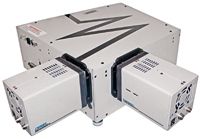
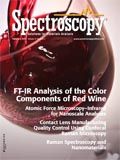
LIBS Illuminates the Hidden Health Risks of Indoor Welding and Soldering
April 23rd 2025A new dual-spectroscopy approach reveals real-time pollution threats in indoor workspaces. Chinese researchers have pioneered the use of laser-induced breakdown spectroscopy (LIBS) and aerosol mass spectrometry to uncover and monitor harmful heavy metal and dust emissions from soldering and welding in real-time. These complementary tools offer a fast, accurate means to evaluate air quality threats in industrial and indoor environments—where people spend most of their time.
NIR Spectroscopy Explored as Sustainable Approach to Detecting Bovine Mastitis
April 23rd 2025A new study published in Applied Food Research demonstrates that near-infrared spectroscopy (NIRS) can effectively detect subclinical bovine mastitis in milk, offering a fast, non-invasive method to guide targeted antibiotic treatment and support sustainable dairy practices.